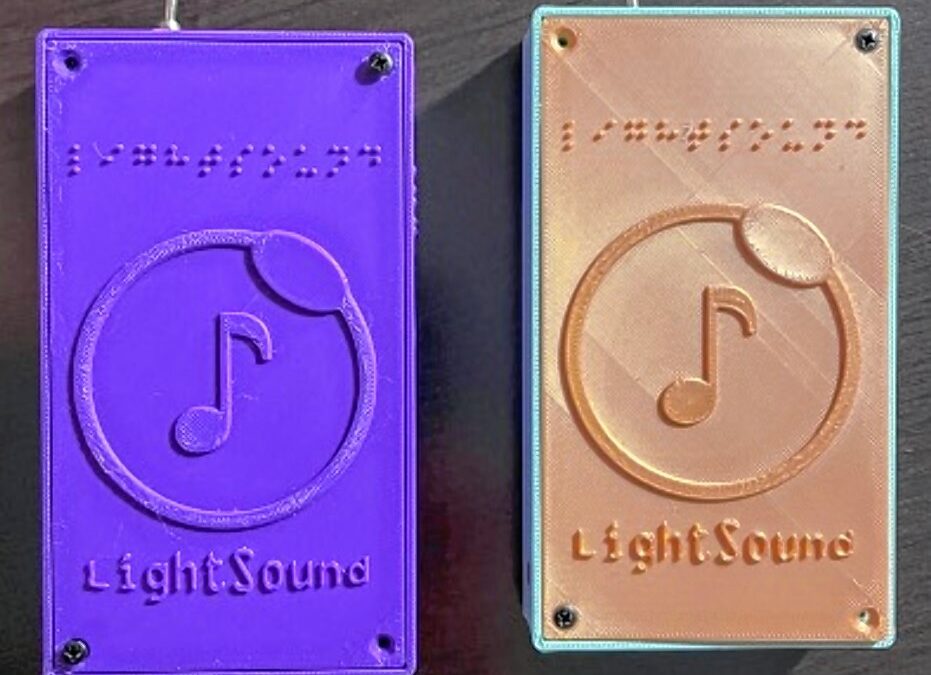When a full solar eclipse sweeps through New Hampshire next April, I’ll be gazing at the sky through proper safety glasses. And maybe I’ll be listening, too.
Listening to a solar eclipse? That seems kind of ridiculous. It seemed ridiculous at first to Allyson Bieryla, too.
“When I first heard about sonification I was like, what do you mean astronomy for the blind? It’s a visual science!” said Bieryla, who knows whereof she speaks because she manages the Astronomy Lab at Harvard University.
Over the years Bieryla has changed her tune, so to speak. “Astronomers, we’re just working with data. However we plot it, visually or tactile, there’s really no reason we can’t do it with sound.”
Now she is spearheading a project called LightSound to build and distribute at least 500 hand-held units that input the changing light levels as the moon blocks the sun and translates them into sounds. It will allow sight-impaired people to experience the astonishing moment when day turns to night and back again.
“The higher end is a flute, then a clarinet, then lowest is a low clicking sound,” she said.
Rik Yeames, New Hampshire’s eclipse cheerleader, is so taken with the project that he’ll be describing it Saturday at the 67th annual state convention of the National Federation of the Blind of New Hampshire, hosted at the Future in Sight offices in Concord.
Totality of the solar eclipse will move through northern New Hampshire on April 8. I’ve already booked a place to stay in Pittsburg so the family can watch it, if the cloud gods allow. (A side effect of LightSound is that it will register even if the sky is overcast, so it could help us sighted folks experience an eclipse.)
I have seen an annular eclipse, when the moon is centered on the sun but because of planetary orientation doesn’t quite cover it, and it was awesome. But I have always heard that a true total eclipse is a whole different experience.
“I saw my first solar eclipse in 2017 and it changed me. These are profound events,” said Bieryla. “I’m an astronomer. I went into it (saying) yeah, yeah, yeah, I know – but it really is a profound event. … Some people were cheering, some were crying, there were jaw-drops. My jaw dropped. “
LightSound came into being for that 2017 eclipse, which skirted New Hampshire (Concord had 64% totality). It was spurred by the work of Wanda Díaz Merced, a blind astronomer whose work converting astronomical data into sound, known as sonification, has produced some discoveries that conventional techniques miss.
“I had started thinking about accessibly of astronomy. I naively came in thinking about physical accessibility but diving into it, I realized there are other disabilities that can be accommodated,” Bieryla said.
The goal from the start was to design a simple device using open-source products, software and the Arduino hardware system, that could be built by anybody who is interested. The initial design was improved for the 2020 solar eclipse visible in South America. “We gave it a higher dynamic range, to make sure it was not saturated, added a MIDI (musical instrument digital interface) component that could assign instruments to the sound profile,” she said. There are also plans for 3-D printing a case.
Bieryla realizes that not everybody is able or willing to download plans and build their own LightSound. Speaking as somebody whose soldering efforts have resulted in a 3-to-1 ratio of burned skin to successful connections, I sympathize.
So she and the Harvard folks are teaming up with makerspace groups and anybody who’s interested to build and distribute LightSound devices. An important step came when the Center for Astrophyiscs designed a printed circuit board, which reduced the amount of connections from hundreds to a few so that “it takes maybe 15 minutes to solder a device.” A recent session at Harvard produced 200 units in 2 days.
Down the road, Bieryla would like to give the devices a tactile interface, using a haptic motor to give vibrational feedback. But that will have to wait.
Bieryla is interested in hearing from makerspaces or other groups who’d like to build some LightSound devices: email her at abieryla@cfa.harvard.edu.
In the meantime, if you haven’t made your eclipse plans, get to work!


 Return to the Concord Monitor
Return to the Concord Monitor